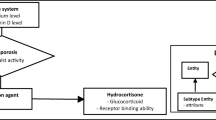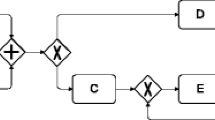Abstract
Effective conceptual modeling requires a shared understanding of the concepts that are found in an application domain. Achieving such understanding, especially for large design problems, is a challenging, and long-standing problem. Conceptual models tend to be either subjective representations of individuals that require mutual knowledge sharing between members of a modeling team or externalized normative representations that require knowledge transfer from model preceptors to model receptors. Model preceptors have either created a conceptual model or conceived it by another preceptor. In prior studies, normative conceptual models were used to investigate knowledge transfer between preceptors and receptors. This research, in contrast, investigates knowledge transfer of conceptual models between model owners and receptors. A 2x2 study design with modeling novices was used that varied the type of conceptual modeling language and the type of information system. Further testing investigated whether knowledge transfers were affected by additional verbal explanations given by the preceptor. Each modeler was provided access to two conceptual modeling languages that naturally support structure or process representations. The study investigated whether the use of particular conceptual modeling languages differ in their effects on shared understanding between two persons and whether additional verbal explanations might increase shared understanding. The results of this exploratory empirical study provide useful insights into the use of Conceptual Modeling Language pairs for shared understanding in conceptual modeling in small groups.
Access this chapter
Tax calculation will be finalised at checkout
Purchases are for personal use only
Preview
Unable to display preview. Download preview PDF.
Similar content being viewed by others
References
Stachowiak, H.: Allgemeine Modelltheorie. Springer, Heidelberg (1973)
Chakraborty, S., Sarker, S., Sarker, S.: An Exploration into the Process of Requirements Elicitation: A Grounded Approach. J. Assoc. Inf. Syst. 11, 212–249 (2010)
Burton-Jones, A., Meso, P.: The Effects of Decomposition Quality and Multiple Forms of Information on Novices’ Understanding of a Domain from a Conceptual Model. J. Assoc. Inf. Syst. 9, 748–802 (2008)
Vlaar, P., van Fenema, P., Tiwari, V.: Cocreating Understanding and Value in Distributed Work: How Members of Onsite and Offshore Vendor Teams Give, Make, Demand, and Break Sense. Mis Quart. 32, 227–255 (2008)
Lin, L., Geng, X., Whinston, A.: A Sender-Receiver Framework for Knowledge Transfer. Mis Quart. 29, 197–219 (2005)
Urquhart, C.: Exploring Analyst-Client Communication: Using Grounded Theory Techniques to Investigate Interaction in Informal Requirements Gathering. In: Lee, A., Liebenau, J., DeGross, J. (eds.) Information Systems and Qualitative Research, pp. 149–181. Chapman & Hall, London (1997)
Wand, Y., Storey, V.C., Weber, R.: Analyzing the Meaning of a Relationship. ACM Trans. Database Systems 24, 494–528 (1999)
Fowler, M.: Analysis Patterns, Reusable Object Models. Addison-Wesley, Longman, Amsterdam (1997)
Scheer, A.-W.: ARIS. Modellierungsmethoden, Metamodelle, Anwendungen. Springer, Berlin (1998)
Booch, G., Rambaugh, J., et al.: The Unified Modeling Language User Guide. Addision-Wesley, Redwood City (1999)
Chen, P.: The Entity-Relationship Model–Toward a Unified View of Data. ACM Transactions on Database Systems 1, 9–36 (1976)
Bera, P., Krasnoperova, A., Wand, Y.: Using Ontology Languages for Conceptual Modeling. Journal of Database Management 21, 1–28 (2010)
Wand, Y., Monarchi, D., Parsons, J., Woo, C.: Theoretical foundations for conceptual modelling in information systems development. Decis Support Syst. 15, 285–304 (1995)
Storey, V.C., Fracchia, F., Müller, H.: Cognitive design elements to support the construction of a mental model during software exploration. Journal of Systems and Software 44, 171–185 (1999)
Burton-Jones, A., Meso, P.: Conceptualizing Systems for Understanding: An Empirical Test of Decomposition Principles in Object-Oriented Analysis. Inform. Syst. Res. 17, 38–60 (2006)
Davidson, E.J.: Technology Frames and Framing: A Socio-Cognitive Investigation of Requirements Determination. Mis Quart. 26, 329–358 (2002)
Fodor, J.A., Pylyshyn, Z.W.: Connectionism and Cognitive Architecture: A Critical Analysis. In: Pinker, S., Mehler, J. (eds.) Connections and Symbols, pp. 3–71. MIT Press, Cambridge (1988)
Gentner, D., Stevens, A.L.: Mental Models. Lawrence Erlbaum Associates, Hillsdale (1983)
Kosslyn, S.M.: Image and Mind. Harvard University Press, Cambridge (1980)
Shepard, R.N., Metzler, J.: Mental rotation of three-dimensional objects. Science 171, 701–703 (1971)
Kuechler, W., Vaishnavi, V.: On theory development in design science research: anatomy of a research project. Eur. J. Inform. Syst. 17, 489–504 (2008)
Cannon-Bowers, J.A., Salas, E., Converse, S.: Shared mental models in expert team decision making. In: Castellan, N.J. (ed.) Individual and Group Decision Making, pp. 221–246. Lawrence Erlbaum Associates, Hillsdale (1993)
McGrath, J.E.: Groups: Interaction and Performance. Prentice-Hall, Englewood Cliffs (1984)
Habermas, J.: The Theory of Communicative Action, Reason and the Rationalization of Society, vol. 1. Heinemann, London (1984)
Wittenbaum, G.M.: Putting communication into the study of group memory. Human Communication Research 29, 612–623 (2003)
Rasker, P., Post, W., Schraagen, J.: Effects of two types of intra-team feedback on developing a shared mental model in Command & Control teams. Ergonomics 43, 1167–1189 (2000)
Stout, R.J., Cannon-Bowers, J.A., Salas, E., Milanovich, D.: Planning, shared mental models, and coordinated performance: An empirical link is established. Human Factors 41, 61–71 (1999)
Lyytinen, K., Yoo, Y.: Issues and Challenges in Ubiquitous Computing. Communication of the ACM 45, 62–65 (2002)
Maass, W., Janzen, S.: Pattern-based approach for designing with diagrammatic and propositional conceptual models. In: Jain, H., Sinha, A.P., Vitharana, P. (eds.) DESRIST 2011. LNCS, vol. 6629, pp. 192–206. Springer, Heidelberg (2011)
Mathiassen, L., Tuunanen, T., Saarinen, T., Rossi, M.: A Contingency Model for Requirements Development. Journal of the Assoication for Information Systems 8, 569–597 (2007)
Gruber, T.R.: A translation approach to portable ontologies. Knowledge Acquisition 5, 199–220 (1993)
Noy, N.F., McGuinness, D.L.: Ontology Development 101: A Guide to Creating Your First Ontology. Technical Report and Stanford Medical Informatics Technical Report SMI-2001-0880, Stanford Knowledge Systems Laboratory (2001)
Cockburn, A.: Writing effective use cases. Addison-Wesley, Upper Saddle River (2001)
Fettke, P.: How Conceptual Modeling Is Used. Communications of the Association for Information Systems 25, 571–592 (2009)
Author information
Authors and Affiliations
Editor information
Editors and Affiliations
Rights and permissions
Copyright information
© 2011 Springer-Verlag Berlin Heidelberg
About this paper
Cite this paper
Maass, W., Storey, V.C., Kowatsch, T. (2011). Effects of External Conceptual Models and Verbal Explanations on Shared Understanding in Small Groups. In: Jeusfeld, M., Delcambre, L., Ling, TW. (eds) Conceptual Modeling – ER 2011. ER 2011. Lecture Notes in Computer Science, vol 6998. Springer, Berlin, Heidelberg. https://doi.org/10.1007/978-3-642-24606-7_8
Download citation
DOI: https://doi.org/10.1007/978-3-642-24606-7_8
Publisher Name: Springer, Berlin, Heidelberg
Print ISBN: 978-3-642-24605-0
Online ISBN: 978-3-642-24606-7
eBook Packages: Computer ScienceComputer Science (R0)




